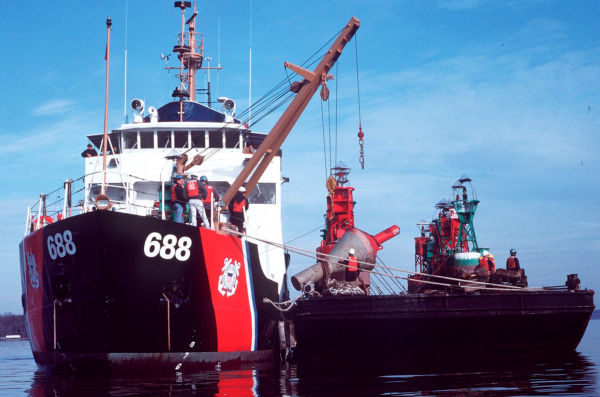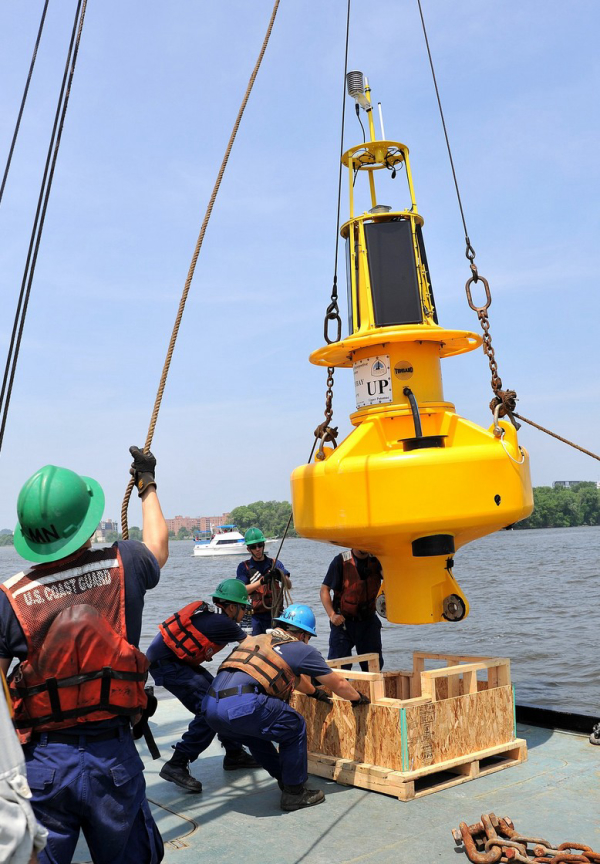
For anyone who has ever run a boat back to the harbor from “over the horizon” in darkness, fog or rain, the familiar “ATON” sightings (Aids To Navigation) as you return are a welcome sight, confirmation that your electronics and your dead reckoning are, in fact, on target, and that you’ll soon be inside a safe harbor.
But it’s an expensive proposition to keep those markers in working order and positioned where they’re supposed to be, and in this age of federal cost-cutting, some ATON’s are getting their notice.
Coast Guard District 1, which covers the rock-bound waters of New England, has announced they will begin retiring dozens of physical buoys and markers this year in a measure to cut costs and also reduce the workload and the risk to maintenance workers.
The rationale is that virtually every coastal boat now has a global positioning system (GPS) that provides the exact location of the boat as well as a chart of all channels, shoals, rocks, wrecks and other risks to navigation, so the physical markers are no longer essential.
Many recreational boats and all commercial boats have more than one GPS on the dash these days, so if one fails, the other gets you home safely. (Of course, if your main electronics wiring system has a hiccup, nothing works. That’s rare in well-maintained boats and ships—but not all boats and ships are well-maintained.)
The Coast Guard spends a lot of tax money on maintaining, repairing and replacing ATON’s each year. Nationwide, the costs have been going up significantly, from about $12 million in 2014 to about $20 million in 2018.

But that’s not a lot in an agency with a total annual budget around $13 billion. It’s not hard to understand that handling massive buoys that weigh many tons in a pitching sea is a dangerous business for the brave folks who do it—though not as dangerous as those incredible rescue divers and pilots that perform the agency’s many search and rescue missions. The USCG reportedly saves an average of 3,500 lives per year in operations, as well as recovering some $75 million in watercraft.
In any case, here’s a summary of what the CG is doing in District 1—as you’ll note, they are accepting public comment, so if you boat in that area and have some strong opinions on this change, this is your chance for input.
“The proposal aims to support waterway safety by ensuring the right short-range aids work well with modern navigation technology. Public comment about specific buoy use is essential. A sustainable buoy system ensures safety and efficiency, even during disruptions or technology failures, keeping commerce flowing smoothly. In the First Coast Guard District, the 350 buoys proposed for discontinuation represent about 6% of the 5,640 federally-maintained aids to navigation,” says Matthew Stuck, the First Coast Guard District’s chief of waterways management.

“We’re actively adjusting short-range aids to work better and more sustainably given today’s navigation tools and methods,” said Stuck. “As part of this effort, the First Coast Guard District has assessed AtoN system modernization options over the last two years. Identifying buoys with the highest navigational significance and those providing less navigational value established the baseline to engage the public for feedback on this proposal.”
The Coast Guard is strongly requesting mariners to give feedback before June 13, 2025. When providing feedback, include the size and type of your vessel, how you use the buoys to navigate and the distance at which you start looking for and using it. Responses are only accepted by email at D01-SMB-DPWPublicComments@uscg.mil.
The proposed buoy constellation summary can be found at www.bit.ly/D1Buoy.
— Frank Sargeant
Frankmako1@gmail.com